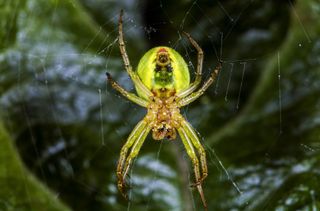(Bloomberg) -- The owner of MoviePass, which promised theater-goers unlimited admission for $9.95 a month, collapsed into bankruptcy and said it will liquidate.
The chaos that often surrounded the defunct subscription service followed it into bankruptcy court, with papers filed by parent Helios & Matheson Analytics Inc. in Manhattan giving wildly conflicting figures about what it owns and owes. A separate regulatory filing showed the interim chief executive, interim chief financial officer and its remaining board members have all quit.
On top of that, the company is facing probes by the Federal Trade Commission, the U.S. Securities and Exchange Commission, New York’s attorney general and four California district attorneys, the bankruptcy petition shows.
MoviePass was a subscription service that let theater-goers see a different film every day for a monthly fee. But skepticism abounded about how the cash-burning business model could be sustained, and as money ran short, frustrated customers were turned away by theaters.
The New York-based company got a hastily arranged short-term loan to resume operations in July 2018 from Hudson Bay Capital Management. Meanwhile, AMC Entertainment Holdings Inc. and Alamo Drafthouse Cinema, two theater chains, launched their own services to rival MoviePass.
Helios & Matheson formally shut down the service last September, citing a failed money-raising effort. The bankruptcy papers show that one of the largest unsecured non-priority creditors is Hudson Bay Master Fund Ltd. with more than $30 million in claims.
In a Chapter 7 bankruptcy, a court-appointed official sells off assets to repay creditors. The initial petition shows publicly traded Helios & Matheson listed liabilities of as much as $50 million and assets of no more than $10 million.

But other pages list substantially different numbers -- one shows debts topping $267 million -- along with a disclaimer that it would be too expensive and burdensome to get current valuations of its assets. One tally, which cites intercompany claims, puts total assets close to half a billion dollars.
Interim Chief Executive Officer Parthasarathy Krishnan and interim Chief Financial Officer Robert Damon resigned, the company said. The shares have been effectively wiped out.
The case is Helios and Matheson Analytics Inc., 20-10242, U.S. Bankruptcy Court for the Southern District of New York (Manhattan)
(Updates with pending investigations in the third paragraph)
--With assistance from Steven Church.
©2020 Bloomberg L.P.
Hollis Johnson/Business Insider
- MoviePass' owner, Helios and Matheson Analytics, filed Chapter 7 bankruptcy on Wednesday, according to a filing with the Securities and Exchange Commission.
- The company's interim CEO, Parthasarathy Krishnan, and CFO, Robert Damon, tendered their resignations upon filing.
Helios and Matheson Analytics, the owner of the defunct movie-ticket subscription startup MoviePass, filed for Chapter 7 bankruptcy on Wednesday, according to a filling with the Securities and Exchange Commission.
The company's interim CEO, Parthasarathy Krishnan, and CFO, Robert Damon, tendered their resignations upon filing. The remaining members of the board of directors — Prathap Singh, Gavriel Ralbag, Muralikrishna Gadiyaram, and Joseph Fried — did so as well.
The bankruptcy filing comes four months after the MoviePass service shut down. MoviePass also filed for bankruptcy separately on Wednesday.
Helios and Matheson had lost hundreds of millions of dollars since August of 2017, when it acquired MoviePass and its then-CEO, Ted Farnsworth, dropped the monthly subscription price to see a movie at any theater once a day from $50 a month to $10.
The price change made MoviePass a must-have for movie fans overnight as the company was bombarded with hundreds of thousands of new subscribers. But the company could not find a stable business model, as it had to repay the movie theaters full ticket price on most of the movies its subscribers saw.
The price drop eventually led to downfall of MoviePass — which could never keep up with the demand and, as Business Insider reported in its definitive at the company's rise and fall, went to extreme lengths to keep the company afloat, which several sources said included blocking some subscribers out of their accounts — and Helios and Matheson along with it. The company's stock plummeted and after months of trading below $1, it was delisted from the Nasdaq in February of 2019.
Farnsworth, the mastermind of the $10-a-month plan, stepped down as the CEO of Helios and Matheson soon after MoviePass shut down and submitted an offer to purchase MoviePass and other assets owned by Helios and Matheson, including MoviePass Films and Moviefone.
Helios and Matheson has yet to sell MoviePass or its other assets.
Read our four-month investigation on the rise and fall of MoviePass on Business Insider Prime.






















